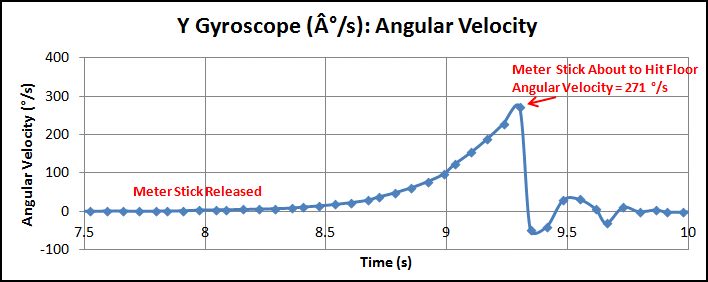There is a well-known problem in rotational dynamics that involves a meter stick. The meter stick is held in a vertical position with one end on the floor. It is then released so that it falls to the floor. The end initially on the floor is not allowed to slip during the fall. Students are asked to derive an equation that predicts the angular velocity of the meter stick just before it hits the floor. The derivation involves many physics concepts including gravitational potential energy, rotational kinetic energy, conservation of energy, moment of inertia, and angular velocity, thus giving the student a good workout in the physics involved.
Now with the availability of The PocketLab, students can do a quick experiment to test the validity of their theoretical equation for angular velocity. Finally, they can discuss some possible explanations for any differences between their theory and their experimental results.
The movie below shows a typical run of the experiment. PocketLab, in its silicone protective case, has been taped to the center of the meter stick, though it could have been placed anywhere on the meter stick since the angular velocity is the same for the entire rigid meter stick. It seems reasonable, however, to place PocketLab at the center-of-mass of the meter stick to keep the mass uniformly distributed about the center-of-mass.
The photo below shows a close-up of PocketLab taped on the meter stick after the meter stick has hit the floor. With the orientation of PocketLab shown, the meter stick has fallen in the XZ plane, making the Y angular velocity of interest in this experiment.

The graph below shows the Y angular velocity of the meter stick as it falls. This graph was obtained with Excel from the gyroscope.csv file created by the PocketLab app. It is seen that the angular velocity of the meter stick just before hitting the floor is about 271 º/s. This agrees to within 13% of the theoretical angular velocity of 311 º/s. The theory is found in a file attached to this lesson.


